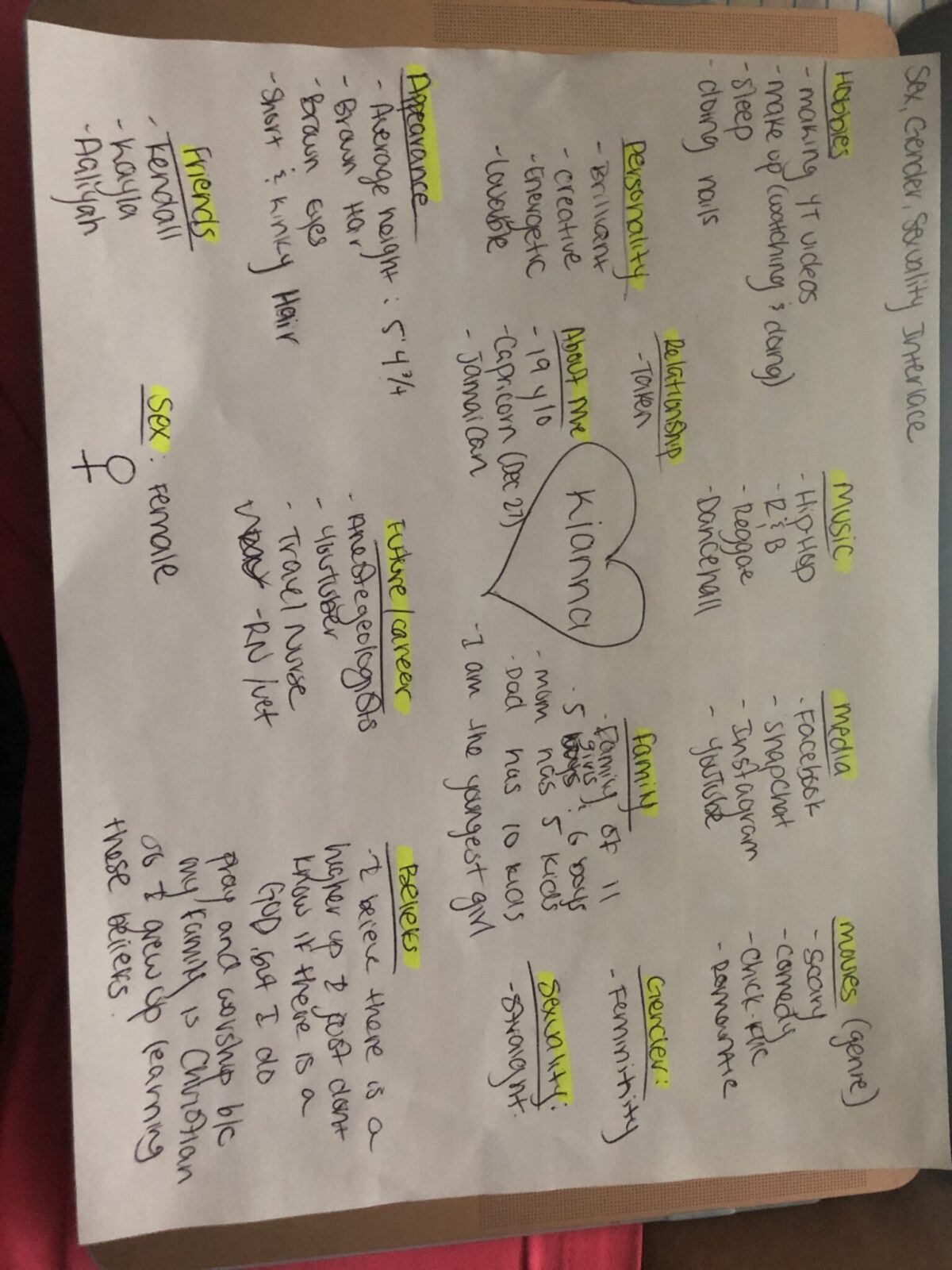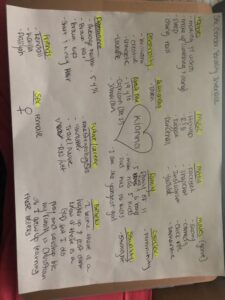Gender identity is a very relevant topic today. Many people have their own ideas about the correctness and error of each sexual behavior and these people are very precise about their ideas. Gender identity is defined as a personal conception of oneself as male or female, both or neither. Your gender identity is how you feel inside and how you express those feelings.
I would categorize my gender identity as female. Sex is the labels of male, female or intersex, given to someone at birth based on their body parts. My sex is female. I was born with a vagina and overtime as I got older my body started developing as a women’s would. I started having my menstrual cycle, my breasts and butt were getting bigger.
Sex role development begins in infancy. It is a basic factor of a stable identity. The key component to identity formation are the social influences. This includes parental expectations, peer relationships and social experience. From the time children are born, parents tend to treat their child by their sex, from the name given to the baby to the toys they get to play with. This places the child into one category or another. The simple act of decorating a room or providing access to various play things is connected with factors of adult influence.
Even toys and TV shows seemed to be gender analyzed. As a child, I loved to watch Dora. I had all of her toys and merchandise. I grew up with Barbie dolls and fake kitchen sets, things that girls would like to play with. Usually boys go for toy guns and action figures. This does play a role in one’s gender identity.
When considering myself, growing up I was raised as a girl and I’ve always thought of myself as a girl. I did play a lot outside with the boys and I have always related more with boys rather than girls but that’s because I have a lot of older brothers and cousins.
To start it off with small detailed information about myself, my name is Kianna. That is a female’s name. Middle name, Felicia, which is also feminine. When I was younger I had a white room. White is known to be a mutual color not really masculine or feminine, but I had pink flower stickers all over my walls and dolls everywhere. Pink is said to be a color corresponding to girls.
Gender expression is how a person shows their gender identity. It includes physical expressions like ones clothing, hairstyle, makeup, and social expression. Some examples of gender expression are masculine, feminine, and androgynous. These concepts are also related to the concept of gender role. My gender expression would be considered feminine. Usually when people look at me they consider me to be a girly girl. I like to wear dresses, skirts and crop tops like most women. But I don’t limit my closet to these. I have jeans and tshirts like men do too but that isn’t my main wardrobe. Based on my hairstyles I think anyone would be able to identify masculine or feminine. I like to wear long weaves and braids.
Orientation/ attraction is a term used to describe sexual and/or romantic attractions to others. This can be categorized as straight, lesbian,, gay, bisexual, queer, etc. I categorize myself as straight. I like men. People often ask how do you know you don’t like women and I find it weird because usually being gay, or liking the same sex, is looked down upon in many cultures. Mine , for instance, my family is Jamaican. So gay people are always being bashed and punished. There’s even several songs made about how gayness is not accepted. This is also how culture plays a part in one’s attraction.
I have a sister named Salina. She’s older than me but we have the same parents and we grew up in the same house with the same rules. But she was always the opposite of me. She wasn’t such a girly girl. She likes wearing jeans and sweats. She comes off aggressive. She’s more of a tomboy. She’s also gay which I am not. This made my conclusion that although experiences may be similar the end result isn’t the same for everyone.
To conclude my statement, gender identity is not simply defined by what we are but more so the combination of our physical appearances and our inner self. Often people have difficulty identifying with either of the sexes especially when genetics factors of abnormal development are present. Gender identity is not a black and white matter, chromosomes, environmental factors, and psychological factors all influence the individual’s sense of being male or female.so the big question is what if I didnt play with dolls but trucks instead, or what if i had a unisex name, What if something in my life changed would that changed my identity from who I am today?

